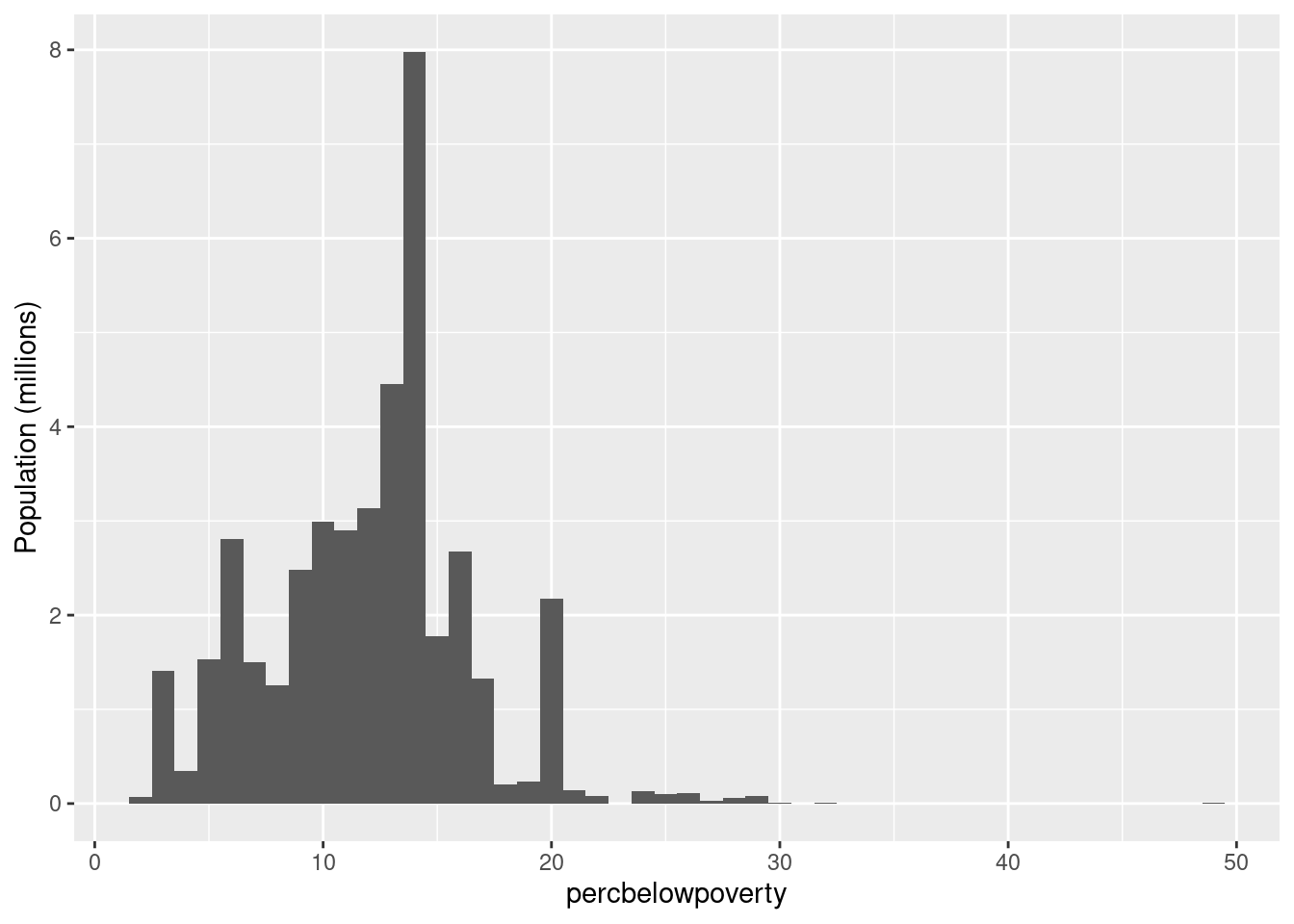5.3 Weighted Data
If each row of your dataframe contains multiple observations, we can use a weight to visually give scale to observations
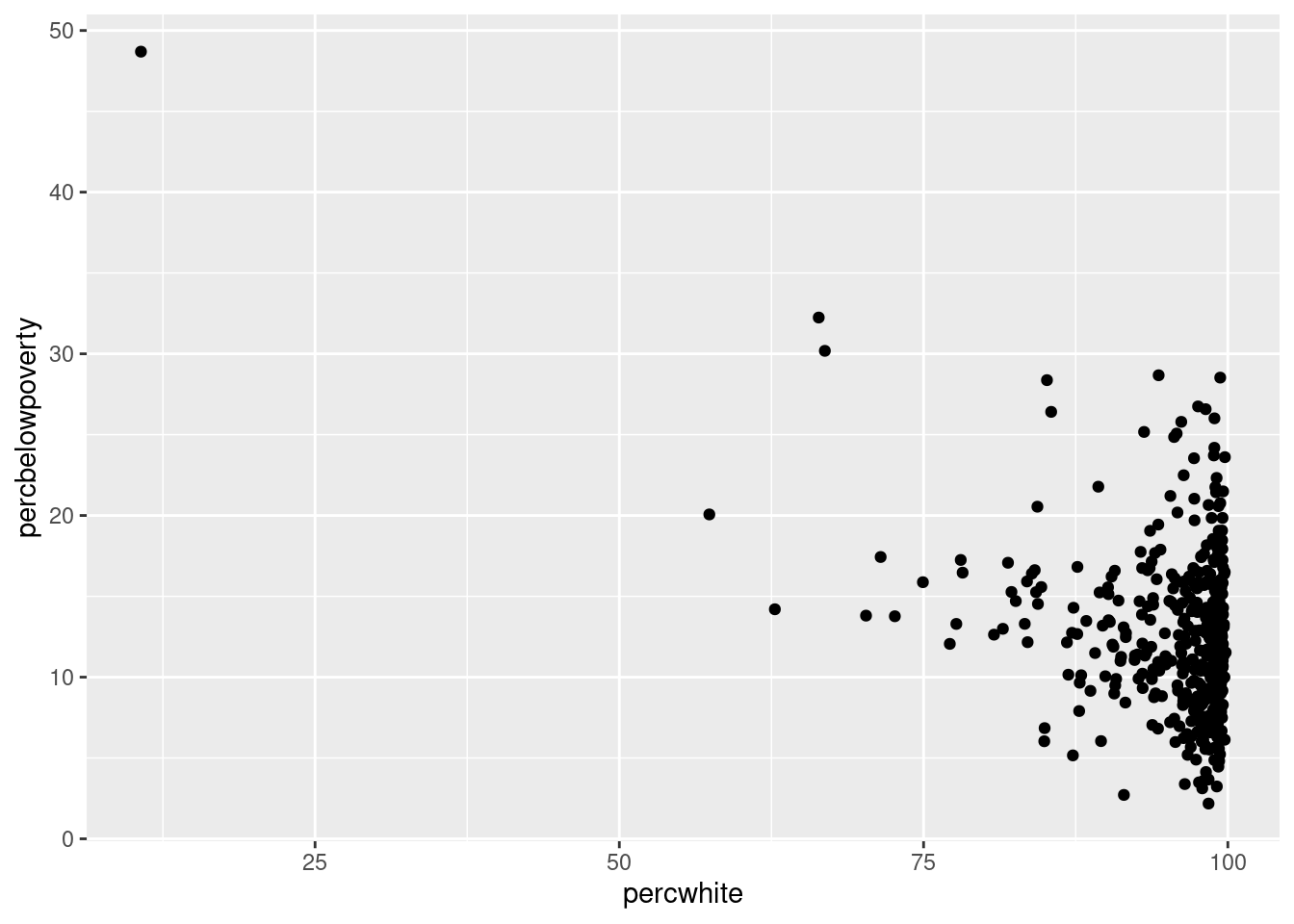
# Weight by population
ggplot(midwest, aes(percwhite, percbelowpoverty)) +
geom_point(aes(size = poptotal / 1e6)) +
scale_size_area("Population\n(millions)", breaks = c(0.5, 1, 2, 4))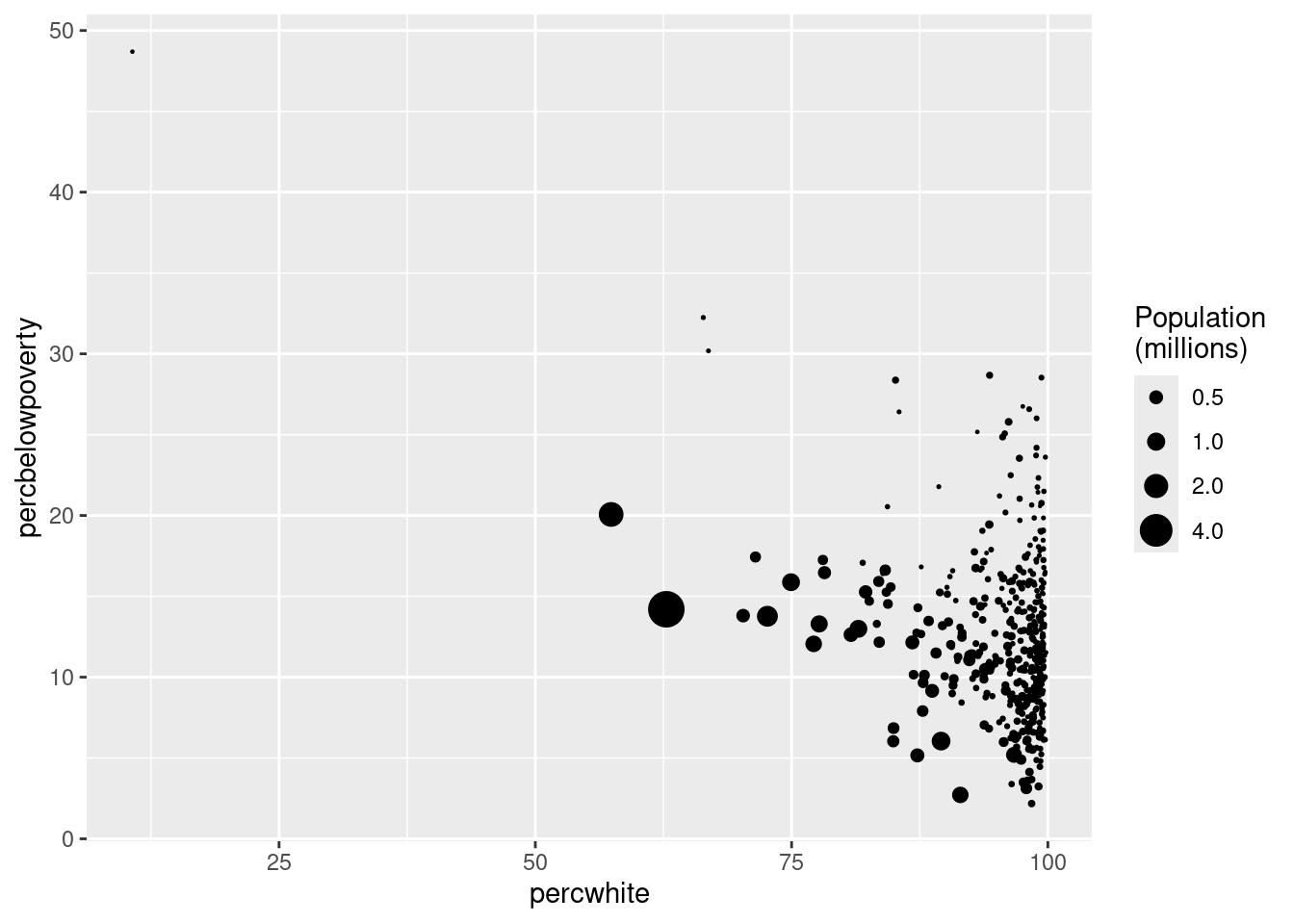
# Unweighted
ggplot(midwest, aes(percwhite, percbelowpoverty)) +
geom_point() +
geom_smooth(method = lm, size = 1)## `geom_smooth()` using formula = 'y ~ x'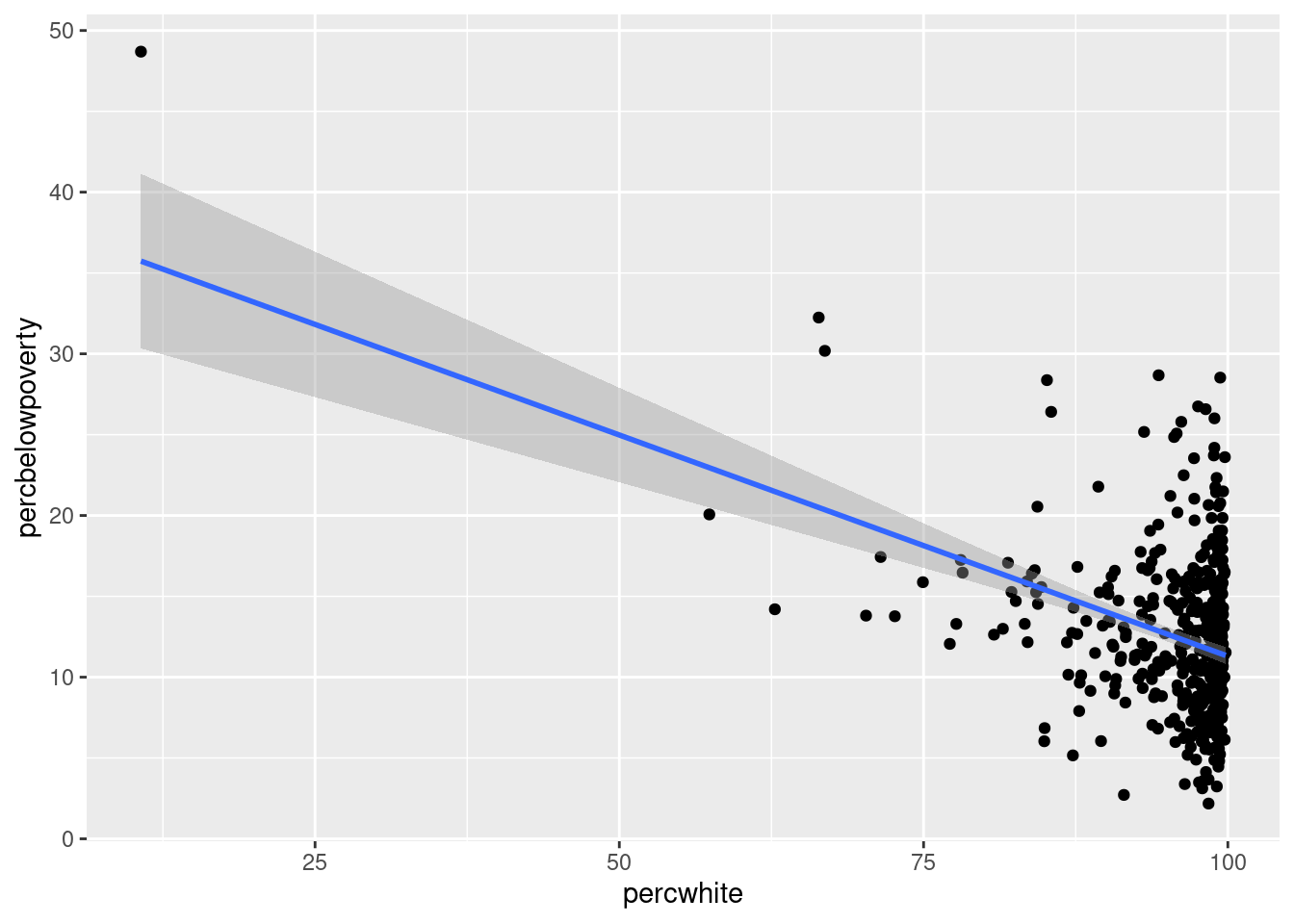
# Weighted by population
ggplot(midwest, aes(percwhite, percbelowpoverty)) +
geom_point(aes(size = poptotal / 1e6)) +
geom_smooth(aes(weight = poptotal), method = lm, size = 1) +
scale_size_area(guide = "none")## `geom_smooth()` using formula = 'y ~ x'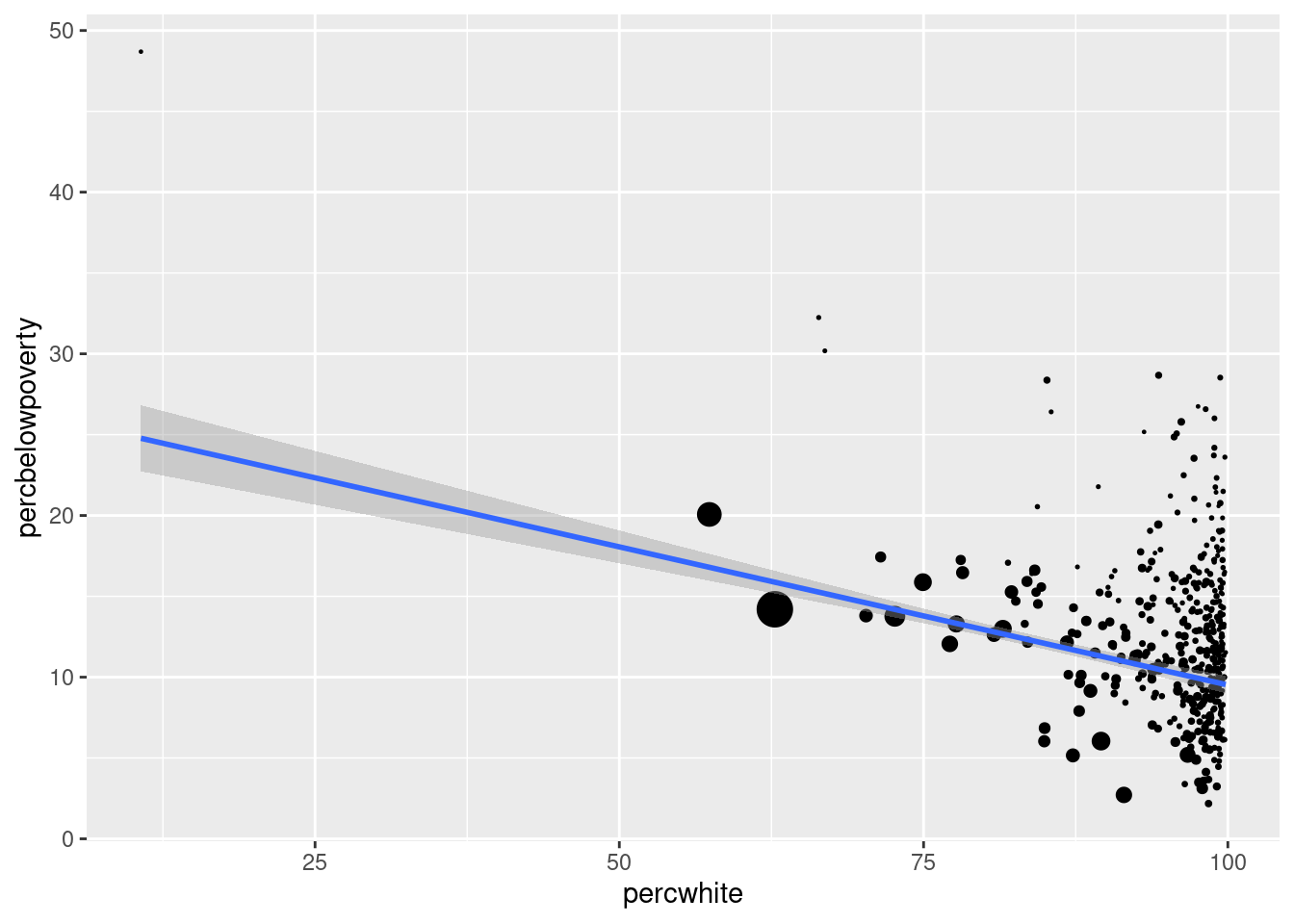
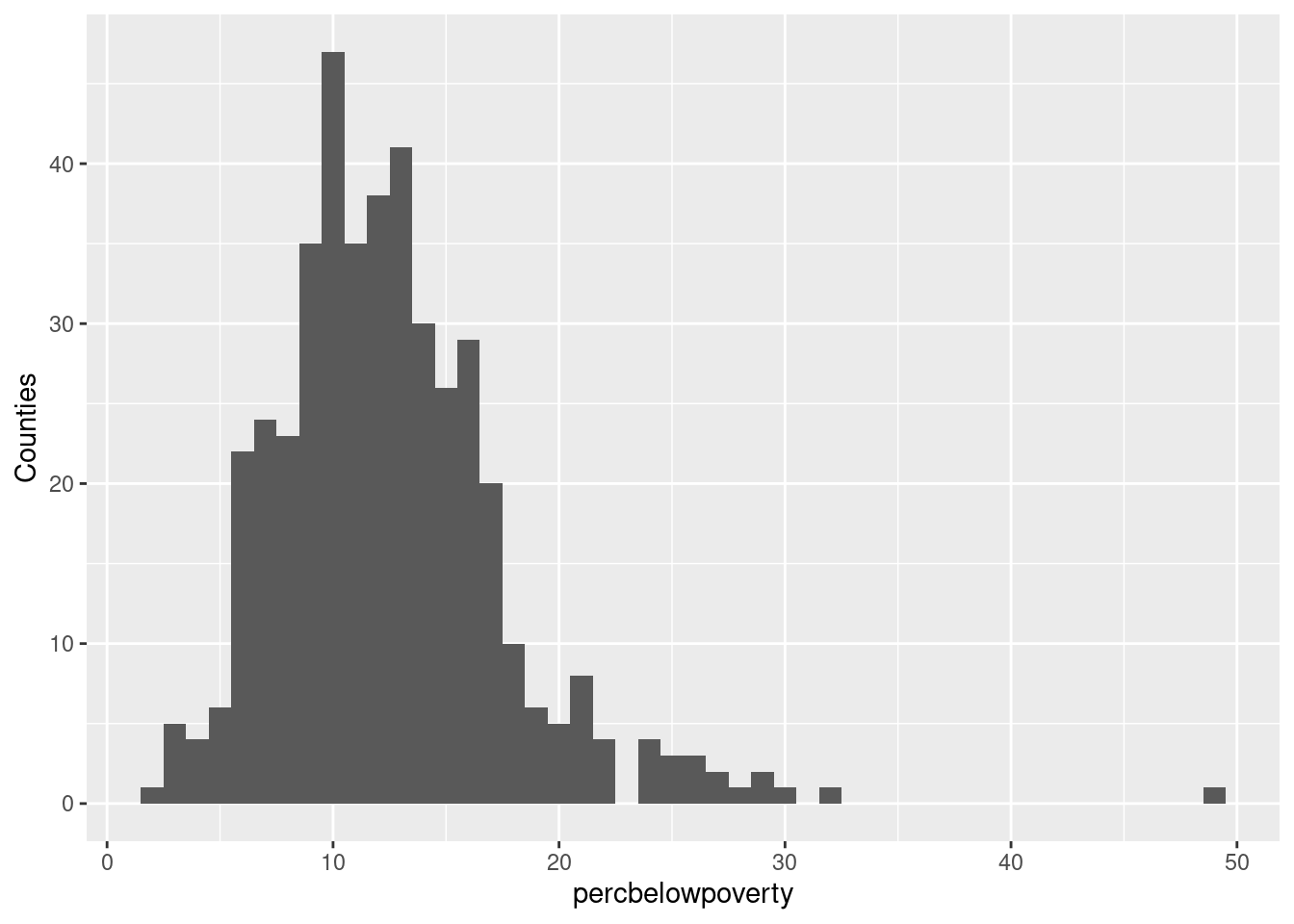
ggplot(midwest, aes(percbelowpoverty)) +
geom_histogram(aes(weight = poptotal), binwidth = 1) +
ylab("Population (1000s)")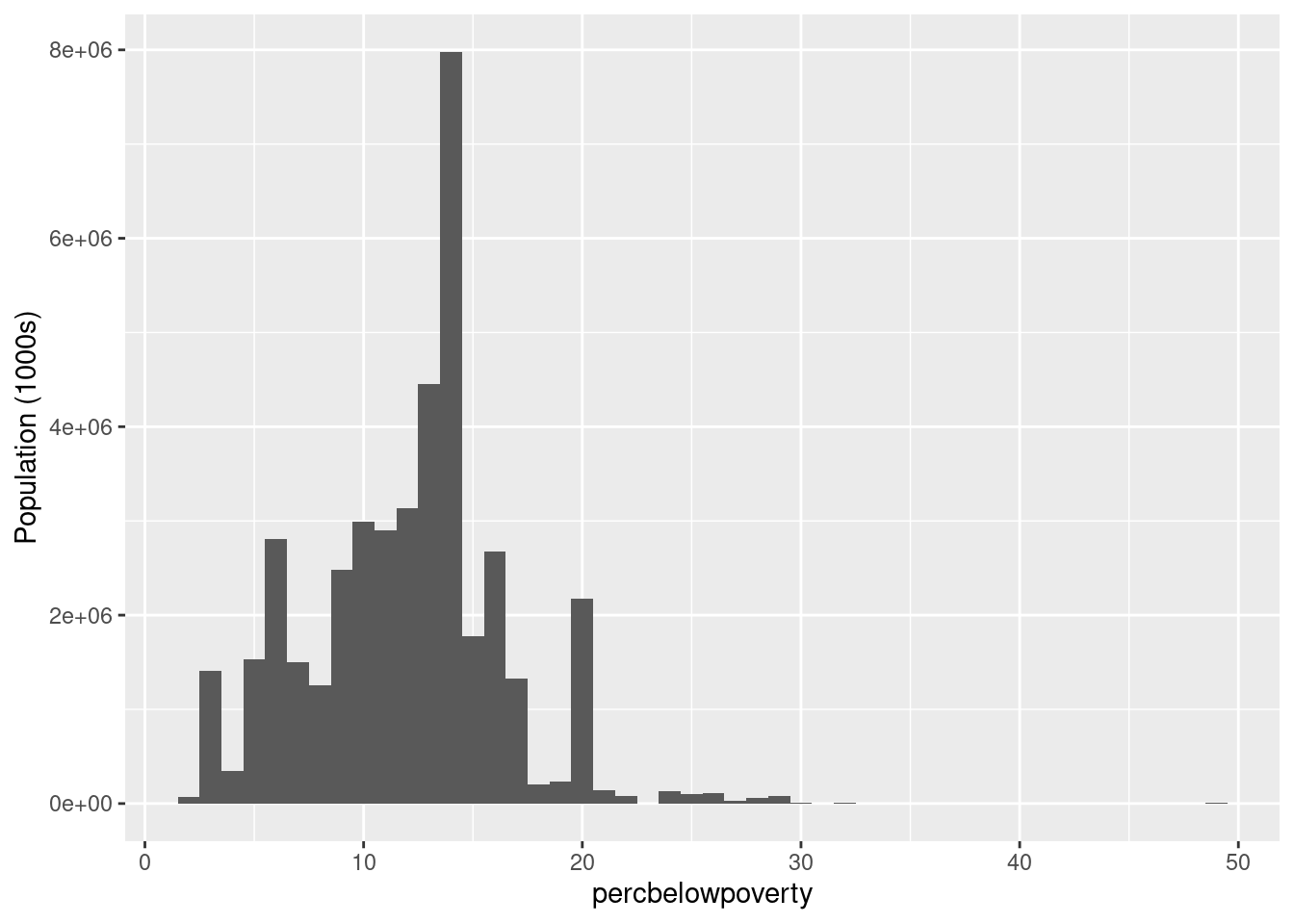
Question for the group: Is the above
ylabcorrect? Check out the next two figures, can you see the difference?
ggplot(midwest, aes(percbelowpoverty)) +
geom_histogram(aes(weight = poptotal/1e3), binwidth = 1) +
ylab("Population (1000s)")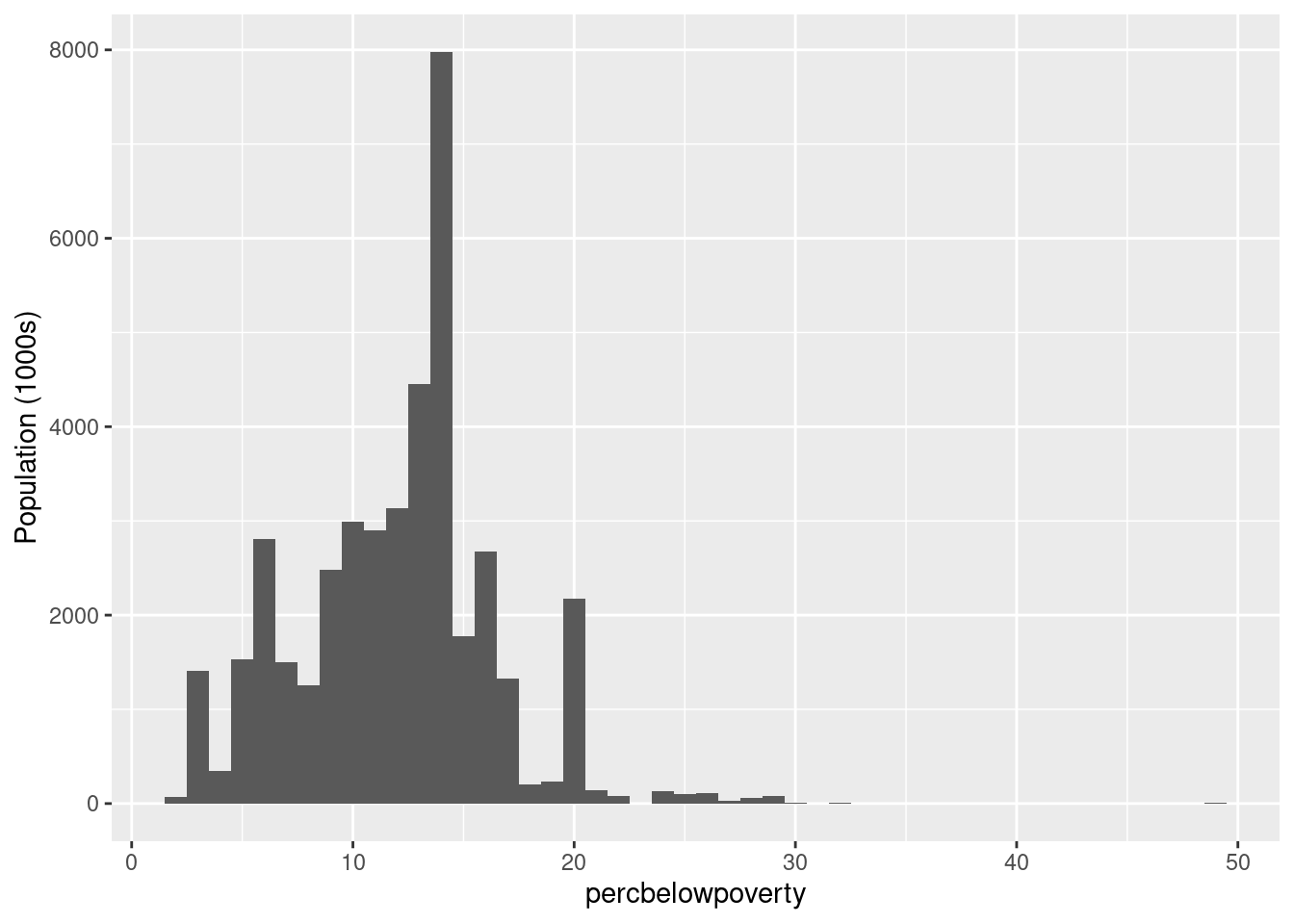
ggplot(midwest, aes(percbelowpoverty)) +
geom_histogram(aes(weight = poptotal/1e6), binwidth = 1) +
ylab("Population (millions)")